Manufacturer News
News with a French Flavour

So what’s bubbling on the stove in France? Here are some new French cars soon to be coming onto the market. These models will definitely be sold in Europe, hopefully making their way south to roll onto our showroom floors.
Renault 5
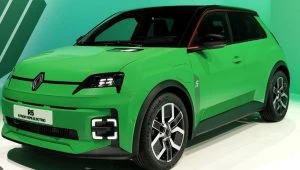
The all-new Renault 5 is back! This is a cool-as retro-inspired EV hatchback that has captured styling from the old Renault 5, embedding it into the new car’s design and detailing. Though a throwback to the iconic Renault 5 of the 1970s–1980s, the new wee car packs plenty of clever technology under its skin.
The interior is fresh and inspiring, and its clever infotainment system is integrated with Google services. The car’s two-step dashboard looks incredible, while the denim-like trim works nicely both as visual and tactile stimulation. The seats are made from recycled plastic bottles, and there are plenty of bright colour schemes for the upholstery and interior. You can even get a little wicker basket to sit in the passenger footwell for carrying your baguette! All the controls are nicely wrapped around the driver, and the new Renault 5 gets a 10.0-inch infotainment screen and a 7.0-inch digital driver’s display.
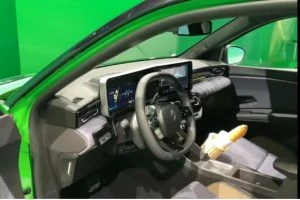
This is a direct alternative to the MG 4 and BYD Dolphin, as it boasts two battery options and a range of up to 390 km. Like the old one, this is front-wheel-driven, and there are three levels of power output to choose from. Entry-level cars have 71 kW, enabling it to run the 0–100 km/h dash in around 12 seconds. The 92-kW version performs the same sprint in 9.0 seconds. And the top of the range 112-kW version sees the little hatchback making it in around 8 seconds. There is even a suggestion that there will be a hot-hatch version of the new little Renault 5, known as the Alpine A290. So, for those looking for sizzling acceleration, this will be worth the wait.
A choice of two battery packs is available for powering the Renault 5’s electric motor. A 40-kWh pack is great for city commuting. There is also a larger 52-kWh battery pack, which gives you a further range. Both battery options will charge from 15% to 80% in around 30 minutes on a DC fast charger.
The new Renault 5 EV Hatch goes on sale in France in September of this year, where it’ll cost around £22,000 in the UK. Isn’t it great to see it back?
Peugeot 5008
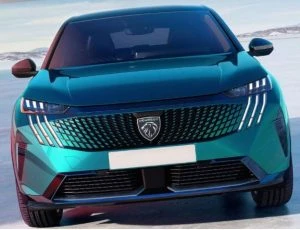
After a seven-seater EV SUV? There aren’t too many of these available; however, the new Peugeot 5008 boosts the options with its E version.
With similar styling to the E-3008, the Peugeot E-5008 shares parts with that car. Snazzy slim headlights are neatly hidden below the bonnet line, along with the car’s signature Peugeot three-claw LED DRLs. Side on, the Peugeot E-5008 is a boxy SUV, hinting towards the generous interior dimensions that are found inside.
The new interior styling and infotainment technology is brilliant. In fact, the Peugeot E-5008 has one of the most stylish and distinctive interiors we’ve seen in cars for a very long time. So, if that hasn’t pricked your ears up, then I’m not sure what else will. The multi-layered dash is wrapped in a groovy grey fabric, the major controls are angled towards the driver, and sitting proudly on top of the dashboard is a massive curved 21-inch screen that houses both the digital driver’s display and the infotainment system. The latest generation of Peugeot’s i-Cockpit system is incorporated into the style and function of the new screen.
With all seven seats in place, you have 259 litres of boot space to put your shopping bags into. A massive 748 litres of luggage space is available with the third row folded down. The Peugeot E-5008 can be had with a 98-kWh battery that is paired to a 172-kW electric motor. This is plenty of power with an equally impressive 650 km range. Then there is the 157-kW motor available, with its 73-kWh battery pack and a slightly shorter travel range. At the top of the tree sits a dual-motor Peugeot E-5008 model with close to 240 kW of power on tap. Its 73-kWh battery is said to provide this model with a range of around 500 km.
The Peugeot 5008 is also available as a hybrid version. Its rather smooth 102-kW petrol engine is mated to a six-speed dual-clutch automatic gearbox, and there’s an added electric motor to boost power and efficiency.
A plug-in hybrid joins the gang in 2025. This will use a 112-kW petrol engine paired to a 90-kW electric motor. This combined power output is nice and strong, while also making this PHEV capable of covering 75 km on electric power alone.
Citroen e-C3
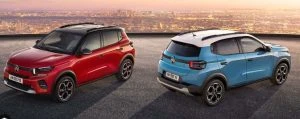
The new Citroen e-C3 has been revealed, and it is an affordable electric SUV boasting up to 315 km of range.
The e-C3 is a funky wee vehicle that is said to be a very affordable buy. It uses an 85-kW electric motor to power the front wheels, capable of propelling the car from 0 to 100 km/h in around 11–14 seconds, depending on the model.
The Citroen e-C3’s interior is comfortable, with some cool-looking fabric on the dash. The two-spoke steering wheel has that funky bit of French flair we all love. To keep the cost down, entry-level models have a mount for your phone instead of a touchscreen, which allows you to access satellite navigation, the radio, and music streaming in this way. All other models have a 10.25-inch touchscreen with all the goodies, and all cars have a classy digital driver’s display.
When these models make it Down Under, we’ll give them a full write-up in our car reviews pages, so if you’re interested, come back later for more.
Sweet Scandi Designs For 2024
There are three main brands of Swedish-designed cars made in 2024. We all know about Volvo; some of us may know of Polestar, and maybe a few of us have heard about Koenigsegg. Apart from Scania, who makes trucks and other things, it’s the aforementioned manufacturers that are creating and making new vehicles.

Volvo
One of the oldest companies in Sweden, Volvo has been making cars since 1927, when Assar Gabrielsson and Gustav Larson worked together to make a substantial car that would be able to withstand the rigours of the Scandinavian climate. The first model was called the OV4 and had two round lights at the front, and the rectangular carriage with four wheels at the corner design that was typical of the early cars of 1900–1925. In the 1930s, Gabrielsson and Larson made the rather stylish and streamlined PV36, which proved to be a solid and comfortable means of transport.
Another standout car Volvo made was the stunning P1800 Coupe of the 1960s. From the 1980s–2000, Volvo were typically making very comfortable, safe, reliable cars that were typically wedge-shaped or boxy in their outline. Since the turn of the century, 2000–2024 has seen Volvo continue to make supremely comfortable cars with plenty of style and a more rounded shape that can slip through the air a little easier. Volvo have continued to excel in the crash testing and crash safety data.
In 2024, Volvo make a wide range of sedans, wagons, and SUVs. Current models for Australia include the:
- Volvo C40 SUV (one model), which was the brand’s first small electric vehicle (EV). A single electric motor or a dual electric motor are available to power the C40.
- Volvo EX30 Wagon (two models), a brand-new EV wagon with plenty of safety.
- Volvo S60 Sedan (one model), one of the most beautiful luxury sedans currently on the road that is powered by a mild hybrid engine that makes it both fuel efficient and swift. The AWD sedan is loaded with luxury and places a high priory on occupant safety, comfort, and the latest technology. It is currently one of the best luxury sedans on the market.
- Volvo V60 Cross Country Wagon (one model). Offering style, luxury and safety, the V60 Cross Country Wagon offers a credible light off-roading capability along with its perfect take-the-family-on-an-adventure prowess. Like the S60, the V60 is powered by a mild hybrid engine, is available in AWD, and is loaded with equipment.
- Volvo XC40 SUV (three models). The Volvo XC40 offers a choice of petrol engines. But you can also opt for the fully electric XC40 Recharge model.
- Volvo XC60 SUV (four models). The Volvo XC60 medium-sized SUV is superbly comfortable, luxurious, and safe. You have a choice of mild hybrid or powerful plug-in hybrid powertrains.
- Volvo XC90 SUV (three models). The Volvo XC90 is a large, luxurious SUV that can seat up to seven occupants. The mild hybrid or plug-in hybrid powertrains deliver plenty of punch and economy. This is one of the best vehicles in its class and it’s also very safe.

Polestar
Polestar was founded in 1996 by Volvo Cars’ partner Flash/Polestar Racing and was acquired in 2015 by Volvo. Polestar was also secured by Greely in 2010. Polestar vehicles are a brand of automotive vehicles that have their design headquarters in Sweden, but the vehicles are produced in China. Polestar vehicles are full EVs with luxury and performance, and are considered as a separate EV performance brand from Volvo. In 2024, Polestar makes stylish hatchbacks, SUVs, and coupes. The current models for Australia include:
- Polestar 2 Hatch (three models)
- Polestar 3 SUV (five models)
- Polestar 4 Coupe (two models)

Koenigsegg
On 12 August 1994, Christian von Koenigsegg (22 years old) decided to follow his dream and build the world’s greatest sports car. Thirty years later, the dream lives on. Having made many models over the three decades, Koenigsegg now offers two models in Australia from an outlet in Victoria:
- 125 Jesko, a supercar powered by a twin-turbocharged 5.0-litre V8 engine which delivers 955 kW of power and as much as 1500 Nm of torque to the rear wheels.
- Gemera, a supercar with four seats. This is a plug-in hybrid supercar made for touring (rather quickly). The Koenigsegg Gemera uses a twin-turbo 2.0-litre three-cylinder engine that is also matched up to three electric motors – one electric motor powering the front wheels, and one electric motor on each rear wheel as well. Combined outputs stand at a whopping 1268 kW of power and 3500 Nm of torque, which is sent through a single-speed Koenigsegg Direct Drive transmission to all four wheels. The 0–100 km/h sprint is achieved in less than 2 seconds, while the car’s top speed is around 400 km/h.
We’ll add more in-depth reviews of these cars (except for the Koenigseggs) at our car reviews page at some point in the future, so have a look over there to find out more.
New Suzuki Vehicles for 2024–2026
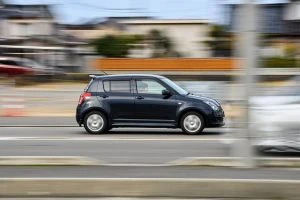
In the near future, Suzuki is looking to bring more hybrid technology into their mix of tricks. The current and soon to be available cars that Suzuki are delivering are exciting to look at, fun to drive, and are keeping pace with modern styling trends. Following Suzuki’s launch of the popular long-wheelbase (5-door) version of the boxy Jimny XL 4×4, Suzuki will be introducing at least another two new models in 2024. Hybrid technology is going to be part of Suzuki’s plan over the next year or two.
Despite the fact that CO2 gets pumped into horticultural green houses to enhance plant growth and production, hybrid vehicles will enable Australian new car buyers to enjoy genuinely fuel-efficient vehicles with low CO2 emissions for the first time. The fewer emissions, particularly of the toxic fume type that can cause respiratory problems, that get farted out into congested city environments the better, thus ensuring people can breathe easier as they leave the office to grab a coffee across the other side of the street or head around the block for a walk during lunch.
Suzuki’s lineup will continue to consist mainly of small cars and small SUVs (alongside Suzuki’s popular motorbikes, of course). There will continue to be the efficient petrol-only vehicles with their low emission rates; however, this year, mild-hybrid technology comes into effect. For those after a new car in 2024, Suzuki still offers buyers their brand-new Swift Hatchback. The 2024 Swift’s exterior looks familiar but is definitely smoother and sleeker than before and, inside the vehicle, there is bigger, more comprehensive touchscreen technology, along with an array of safety upgrades.
Of course, you could also buy yourself the fun little Suzuki Jimny 4×4 in three- or five-door form. These 4x4s are really popular, particularly for people needing a low-cost, go-anywhere type vehicle. These are truly capable 4WD SUVs that can happily tackle the toughest off-road terrain you can throw their way. The cute little Ignis, the dynamic Vitara range, and the stylish new S-Cross SUV are great efficient Suzuki vehicles that you can buy in 2024.
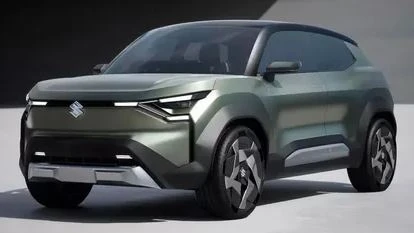
However, 2025/2026 will see Suzuki’s first electric vehicle (EV) model arrive in Australia: the Suzuki eVX. The small Suzuki EV SUV will be manufactured for numerous global markets, including Europe and Asia, with Australia’s introduction likely to be in 2025 or 2026. The Suzuki eVX concept was first revealed at Delhi’s Auto Show, India, in early 2023; it also received a public viewing at the Japan Mobility Show, Tokyo, in late October 2023. It is less than 4.5 metres long, about the same size as the recently facelifted Suzuki S-Cross SUV, and Suzuki suggests that the new eVX is targeting a 500 km driving range ahead of its launch. Equipped with dual electric motors, the Suzuki eVX is set-up well for delivering effective AWD traction should you require off-road action. Of course, Suzuki will also ensure it has fine on-road abilities as well. The eVX definitely looks futuristic and has that chunky, rugged look blended into the vehicle’s lines and shape.
Hilux Baby Ute a Champ

I think plenty of people would love to get their mitts on Toyota’s cute baby Hilux. Due to the Champ’s very no frills disposition, the cost of buying a new Toyota Champ Hilux would only be around $20k if you could buy one here in Australia. However, we’ll have to wait and see if the new Hilux Champ actually makes it down under.
Toyota have launched the new Hilux Champ in Thailand, and it was a vehicle that featured, for the first time, at the recent Japan Mobility Show. At this show, it was displayed in numerous configurations to show just how versatile the little Champ can be, and so it was demonstrated as an off-road vehicle, a coffee van, and even as an ambulance.
The Champ workhorse has plenty of variety in the way it can be built up, so, for example, there are long wheel-base (3085 mm) and short wheel-base (2750 mm) variants with two different cargo trays offered. There are numerous holes for bolting down whatever you like to the cargo tray, so you could easily use this as a camper, a stock carrier for the farm, or even as a coffee van. The Champ’s payload for the cargo deck is around the 1-tonne mark.
You can also opt for any of three engines to power the little Champ. Five-speed manual and six-speed automatic gearboxes are available to link with your specific engine of choice. A rather nice 2.4-litre turbo diesel is good for 110 kW of power and 400 Nm of torque. This would be an economical engine with loads of grunt for performing any demanding tasks with relative ease. A 2.0-litre petrol has 102 kW and 183 Nm of torque, while a bigger 2.7-litre petrol produces 122 kW and 245 Nm of torque.
Luxury isn’t the Champ’s forte, so even electric windows are found only on the higher-spec models (not that this is a bad thing – I kind of miss having roll-down windows that work when the key’s out sometimes). The seats are upholstered in black vinyl, and there are a few safety features like seat belts, a strong structure, and two airbags. There is no infotainment system on-board when sold new; however it does come with two speakers, for which you can access, probably via the driver’s instrument panel.
The new Toyota Hilux Champ takes me back to the solid and reliable little 2WD Hilux and Nissan Navara utes of the eighties and early nineties. These were no frills workhorses, but they were very dependable and robust work companions. And yes, I wouldn’t mind having one.